Linen fabric is durable, but it gets worn out over time. But I didn’t know what when I bought this cloth. The result? The clothes get worn out in no time. I thought of throwing it out, but then Grandma stopped me and said, ‘Why throw it? You can fix it with Linen darning stitch’
I was confused and asked how cause I never really heard of it. She threads the needle, takes the linen fabric, and began explaining,
Linen Darning
Linen darning techniques involve weaving thin, matching threads into the fabric to repair holes or reinforce worn areas seamlessly.
The technique sounds easy in Grandma’s description, but is that easy? Let’s see how to darn linen.
Main facts of darning linen,
- Linen is durable but needs care when it gets worn out.
- Darning with matching threads restores linen seamlessly.
- You can easily repair linen fabric without the need for re-weaving.
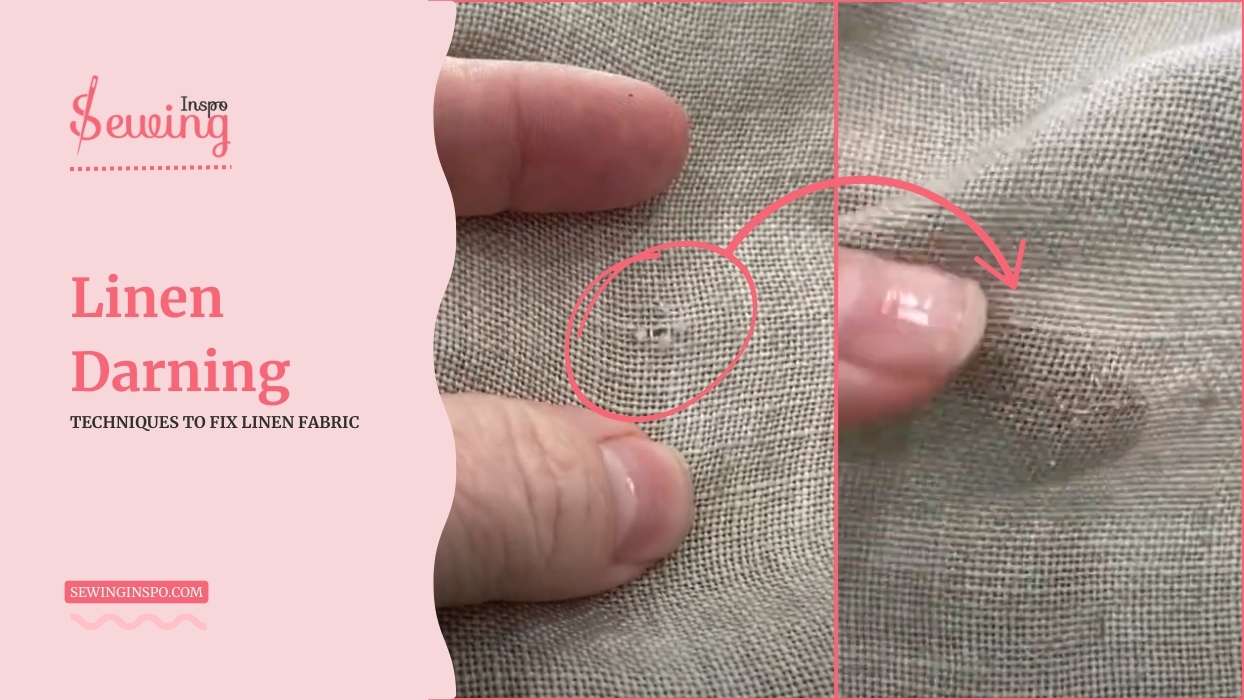
Table of Contents
So, Can Linen Be Darned?
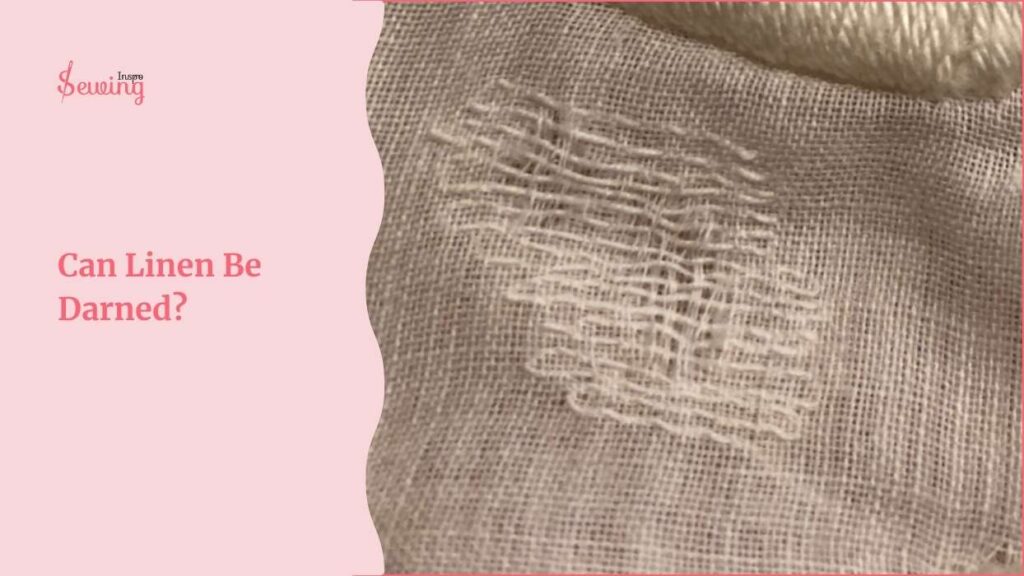
Oh, yes, linen can absolutely be darned! You know, linen is perfect for repairs, whether it’s a little tear in your favorite shirt, a hole of moth, or even a worn-out spot on bed linens. With some care, you can make it look good as new.
Whenever you see a worn, do darning linen.
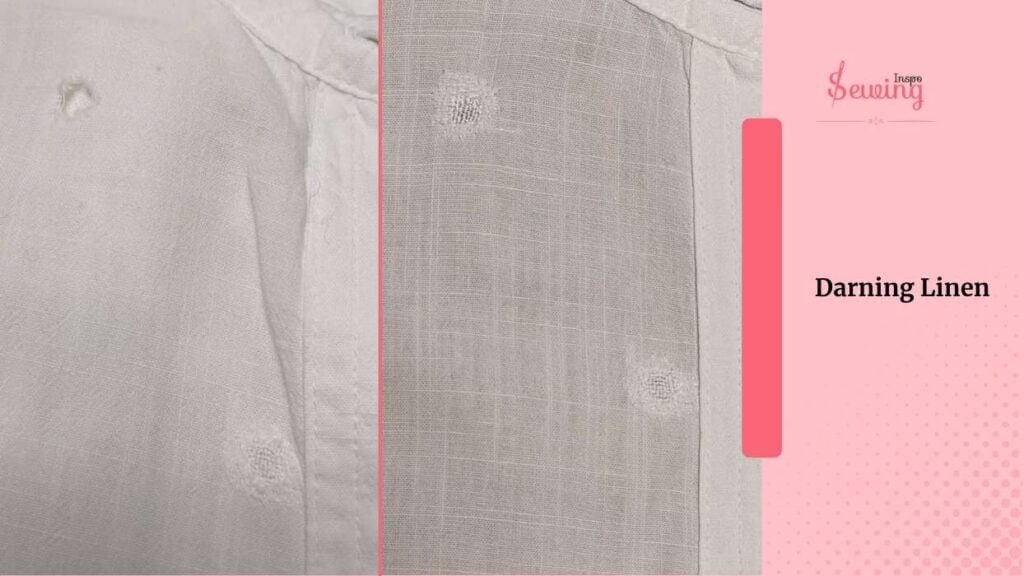
Ok, But Linen Fabric What Is It?
Well, Linen is a natural fabric made from the fibers of the flax plant. It’s one of the oldest textiles in the world, loved for its durability, breathability, and timeless beauty. linen fabric is made from the flax plant.
It’s lightweight and cool to the touch. That’s why it gets so worn out easily. That’s why you need to do decorative darning on it more often.
The trick with darning linen is to use the right thread. Darning cotton or fine linen thread is perfect because it blends right into the fabric and keeps it breathable. That’s what is darning is and do.
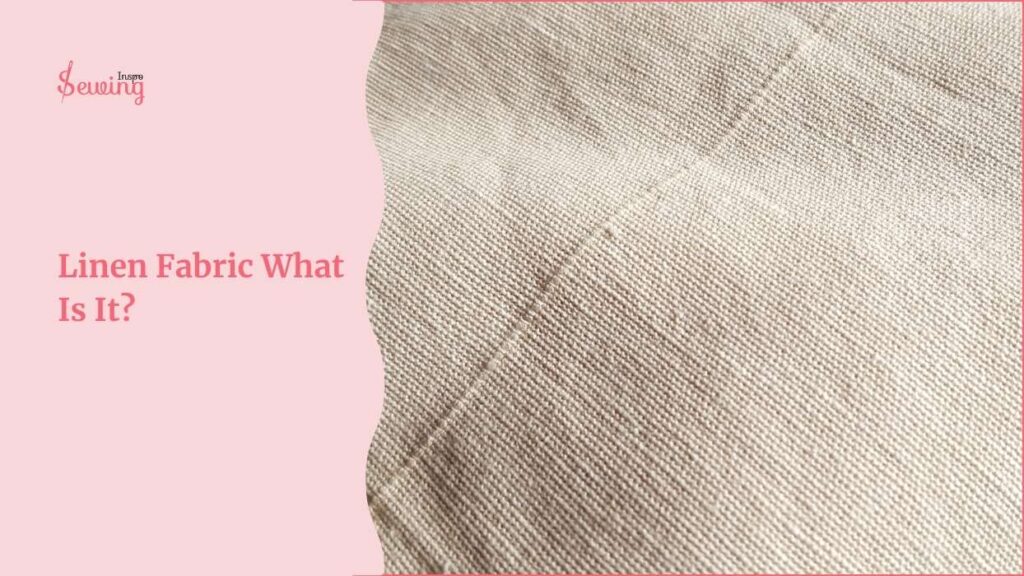
If you’re feeling creative, you can even use embroidery thread to add a decorative touch. It’s a fun way to repair and stand out in a good way.
Now, let’s see how to mend linen, shall we?
How To Darn A Hole In Linen With Linen Darning?
Alright, so here’s what I did to fix this little hole in my linen fabric, and trust me, it’s super simple. Instead of pulling out the loose threads around the hole, I decided to work with them. Why waste perfectly good material, right?
Now, let’s see how to mend a hole in linen fabric/how to darn linen.
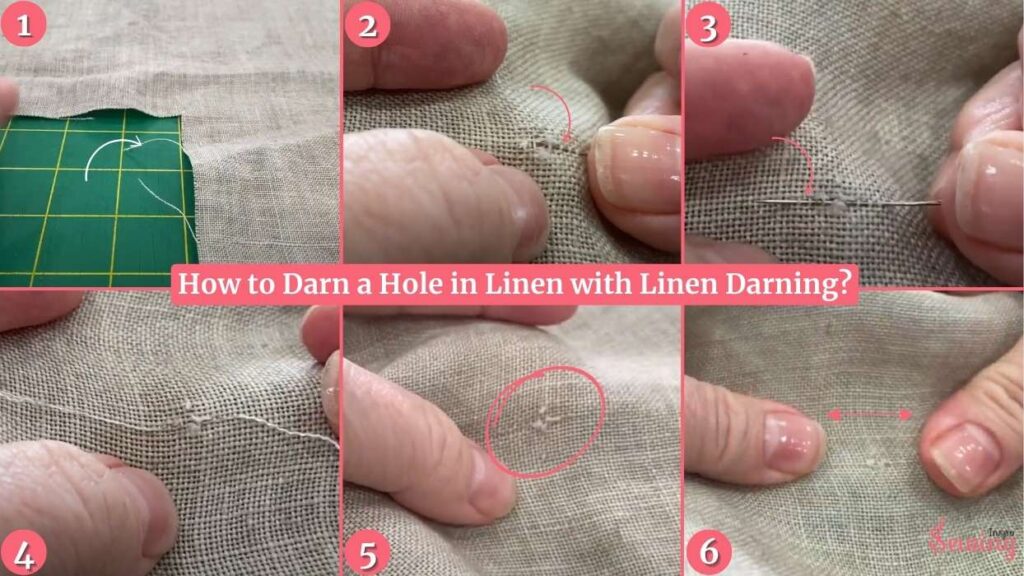
First, I took a thread from the edge of the fabric. Since it’s the same material, it blends in perfectly. But you can use darning cotton too. I threaded it onto my needle. Nothing too long, just enough to work comfortably without tangling. The rule is the same for all kinds of darning stitches & other stitches actually.
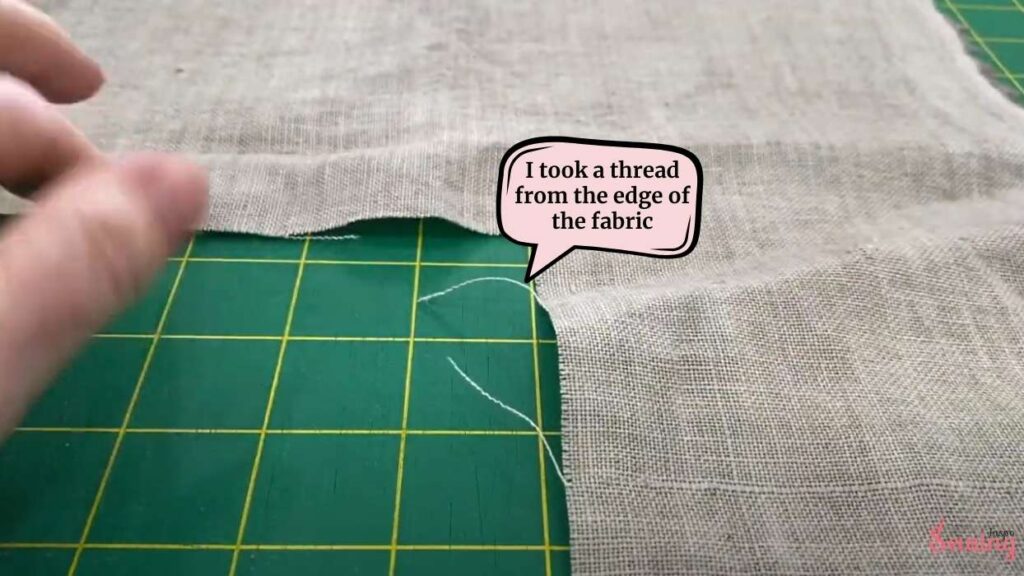
Now comes the fun part. That’s where I’ll show you how to patch linen.
The real darning linen work began now. That’s why I sometimes use it as a darning patch. But honestly, it’s darnn linen is easier than other stitches.
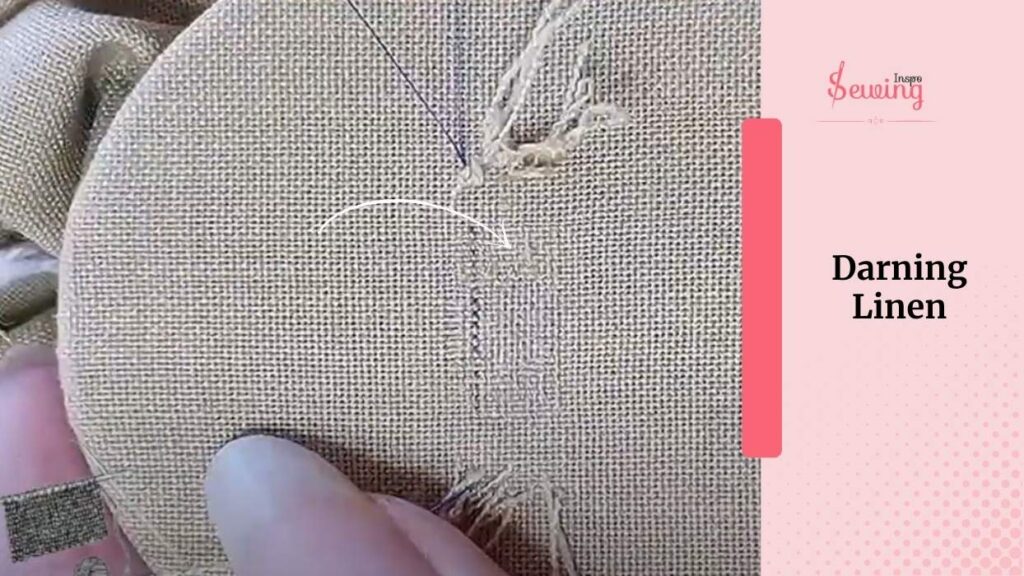
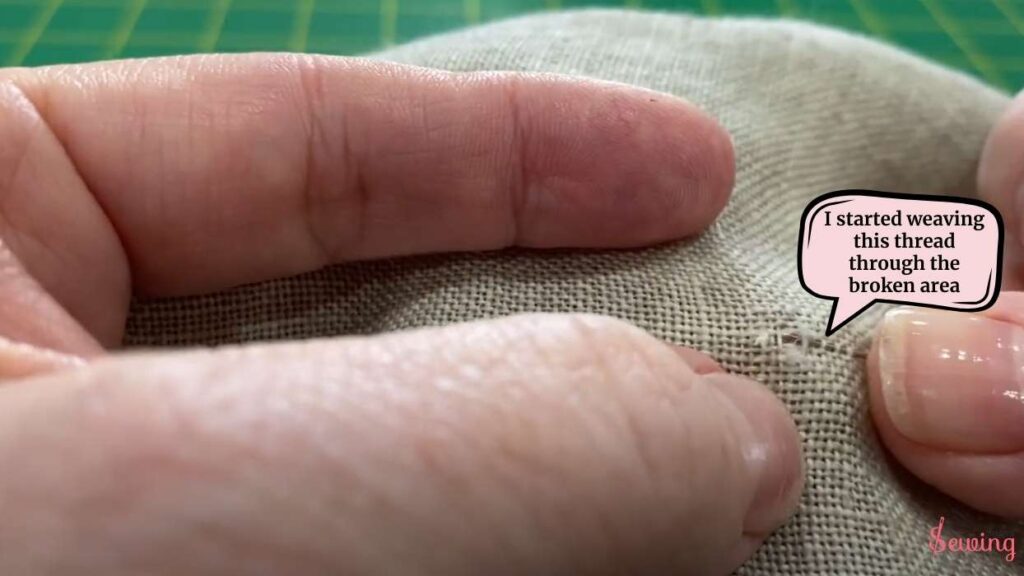
I started weaving this thread through the broken area. It is like mimicking the original weave. Over one thread, under the next. It’s almost like playing a mini game of “follow the pattern.” I use this trick for woven darn stitch too.
You want to ensure you’re going over the right threads and under the right threads.
This is the total opposite of the Japanese darning technique.
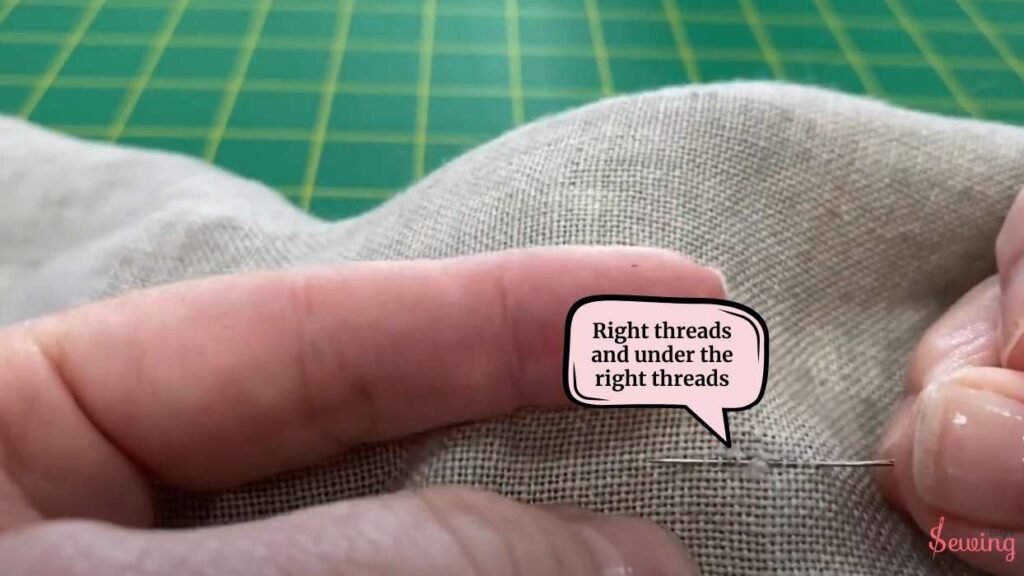
As you weave this, do it like this. Normally, it would go over that thread, but it’s not this time. Just continue as if it were there like an invisible stitch. Move the fluff out of the way. Take your time because it’s important for everything to line up neatly. Otherwise, it will look like diagonal darning.
When I reached the hole’s end,
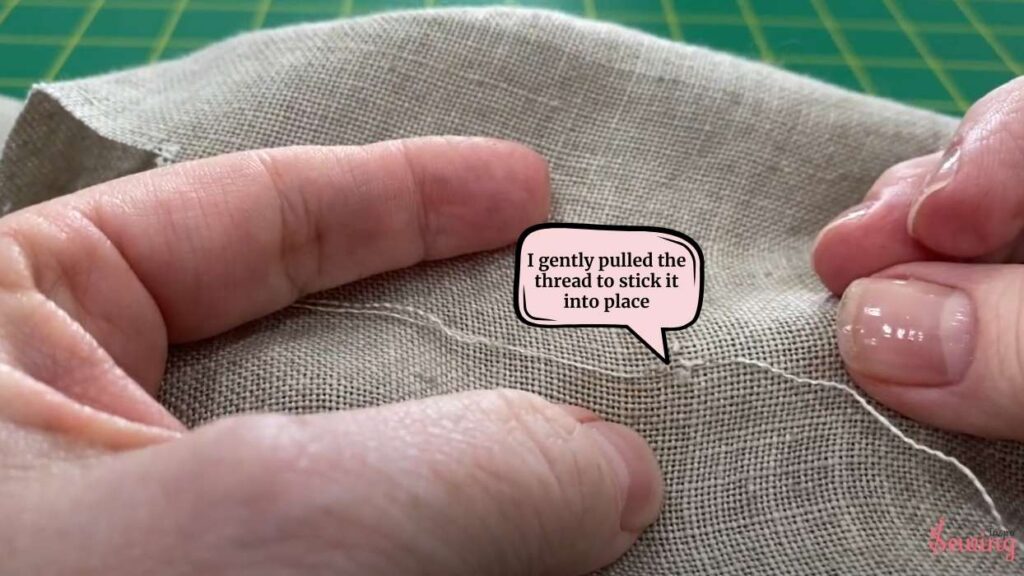
I gently pulled the thread to stick it into place. And you know what?
No need to tie or anchor it unless it’s something that’ll go through heavy washing, like a towel. The fabric’s natural weave will hold everything just fine for regular use. That’s what is darning in sewing.
After that, I turned the fabric and started weaving another thread in the opposite direction, filling in the rest of the hole with the darning linen.
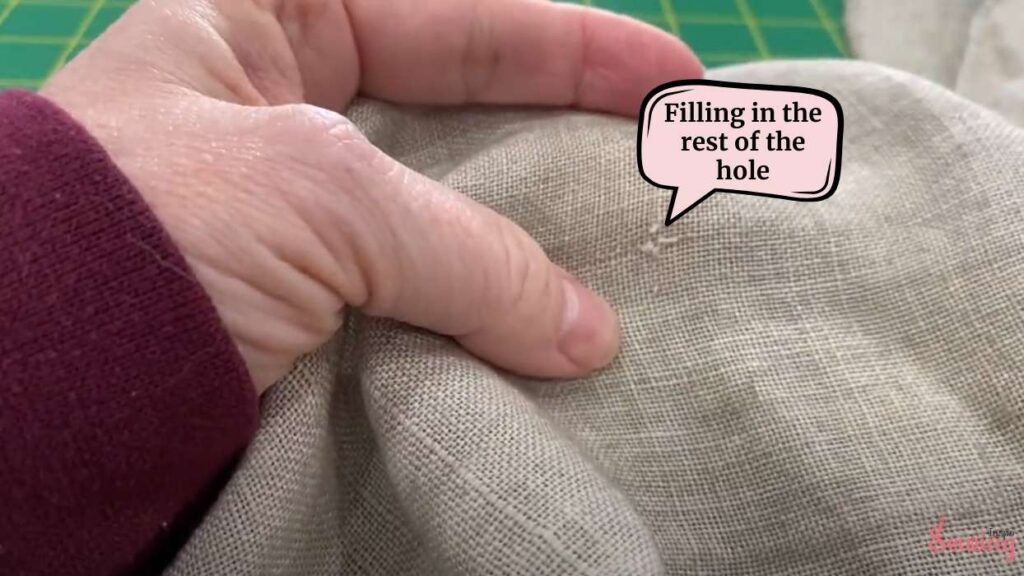
It’s all about recreating the grid-like structure of the fabric. Slowly but surely, the hole started disappearing! See? That’s how to mend a hole in linen fabric.
Once I was done,
I stretched the fabric slightly to smooth it out and snipped any leftover fuzzy bits with my little curved scissors. I did this with every darning pattern. That will make mending linen pants come together.
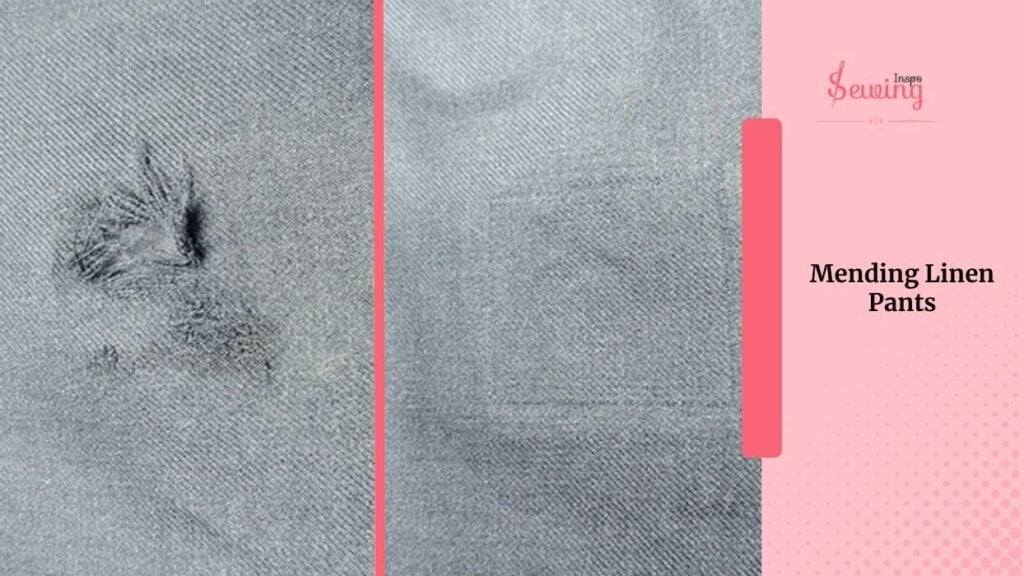
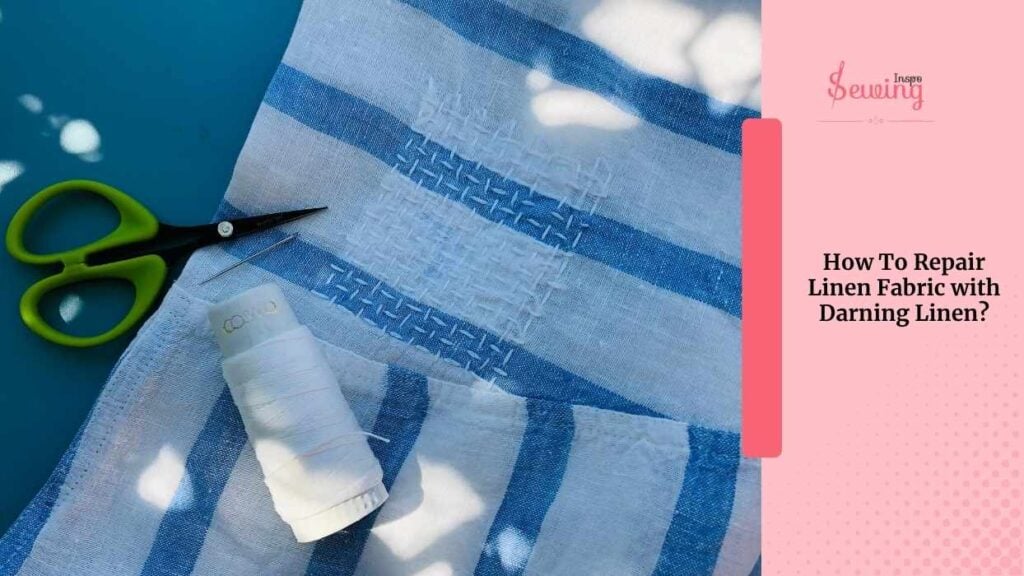
I didn’t cut too close. Just enough to keep it tidy. And honestly, you can barely tell there was ever a hole there. Knowing how to repair linen fabric with darning linen saves me in the long run.
This method works like a charm for linen. It is especially true if you plan to use it for embroidery or cross-stitch. It keeps the fabric sturdy without needing a full re-weave.If you’re wondering how to fix hole in linen shirt, you can try this too.
Quick, easy, and super satisfying! That’s how to repair linen fabric.
This technique can even save your linen gown design. Grandma’s one technique saved me from throwing the dress, too. I hope it works in the same way for my sewinginspo readers too.
Watch Tutorial
That’s how to repair linen fabric. But if you are confused about something then watch this sewing video tutorial. It will clear out your doubts. about darning linen.
How To Fix Linen Hole?
Fixing a small hole in linen can be done with darning. But if your hole is big, then you need to do patch methods,
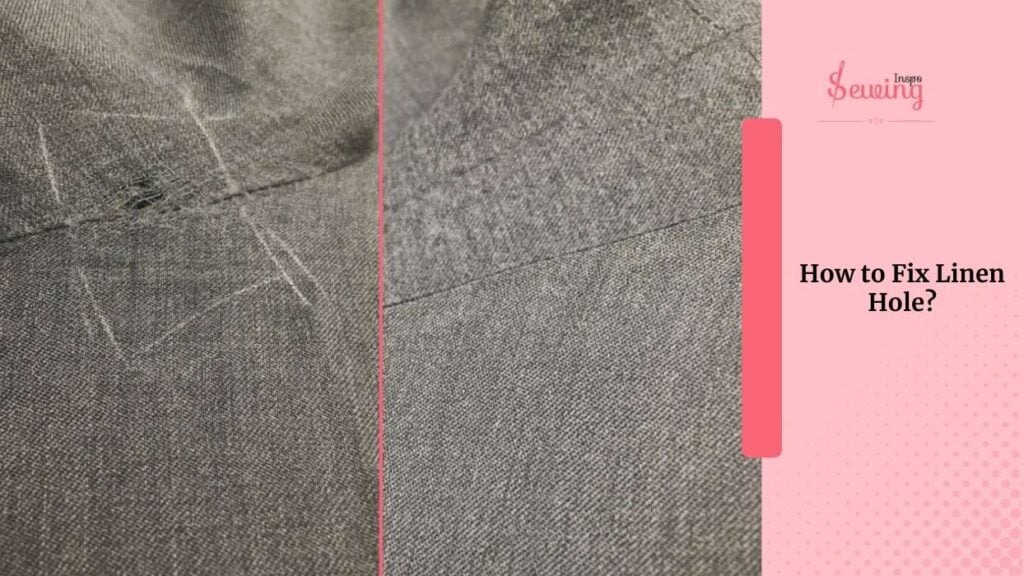
- Select a piece of linen that closely matches your fabric in color, weave, and weight.’
- Make the patch slightly larger than the hole about 0.5–1 cm extra on all sides like scotch darning stitch.
- Place the patch behind the hole so it fully covers the damaged area.
- Use pins or fabric clips to hold it in place.
- Using a needle and matching thread, sew tiny, close stitches around the edge of the hole.
- You can use a whip stitch or a small running stitch.
Trim any excess patch fabric from the back if needed, and press lightly with an iron.
That’s how to darn linen!
Frequently asked questions Of “how to darn linen”
What Does Linen Symbolize?
Linen symbolizes purity, simplicity, and strength. It’s often associated with timeless elegance, resilience, and sustainability due to its durable nature and eco-friendly production.
Is Linen Good For Everyday Use?
Yes, linen is great for everyday use. It’s breathable, lightweight, and durable, making it comfortable in warmer weather. While it wrinkles easily, its timeless look and natural texture make it a popular choice for casual and formal wear.
How to darn linen invisibly?
For invisible darning, choose a thread that matches the linen’s color and weight, keep stitches fine, and follow the weave of the fabric closely.
Is patching better than darning linen?
Patching works well for large holes, while darning is best for small tears or thinning fabric. For heirloom linen, darning is usually preferred for a less noticeable repair.
Closing
Fixing your worn-out linen with a simple darning technique is a great way to breathe new life into your fabric. It’s quick, easy, and rewarding. I’m glad I didn’t throw my fabric away. Grandma’s advice really saved the day!



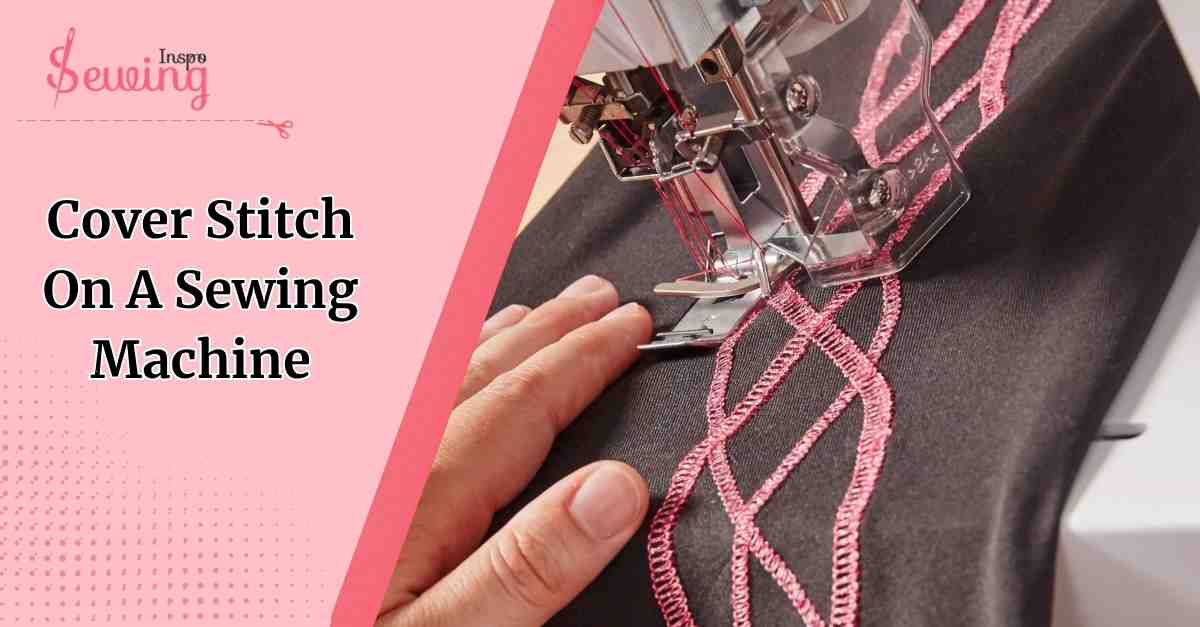
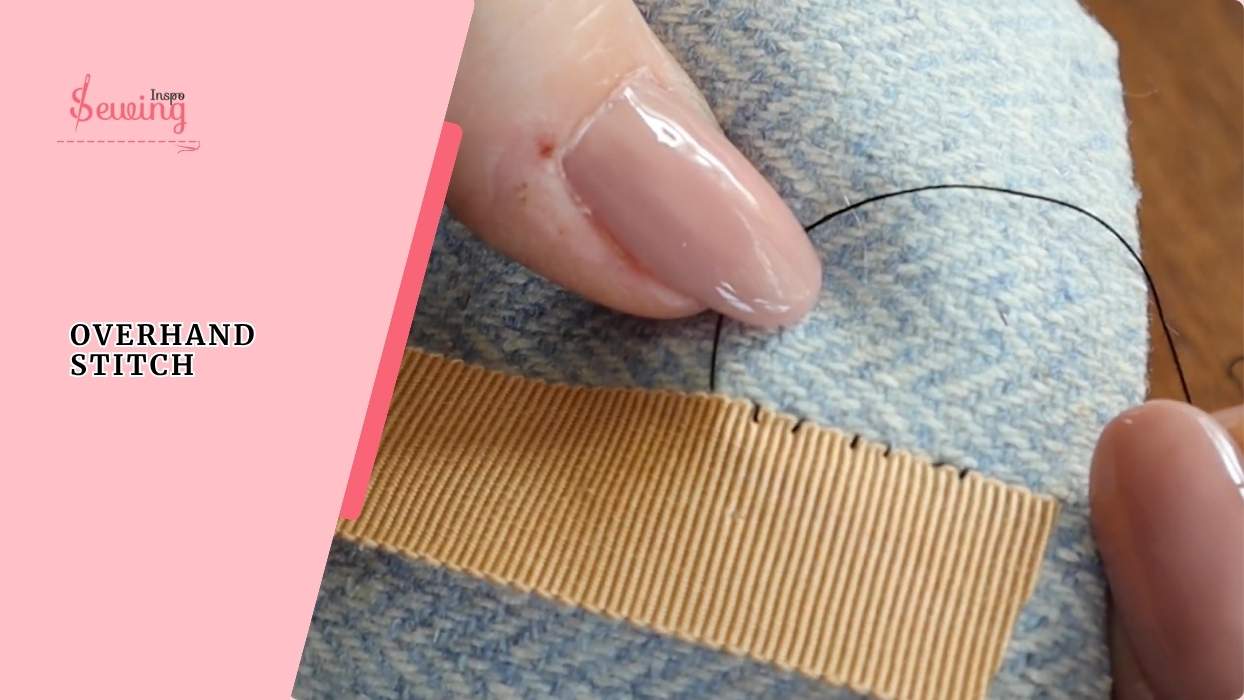
Leave a Reply